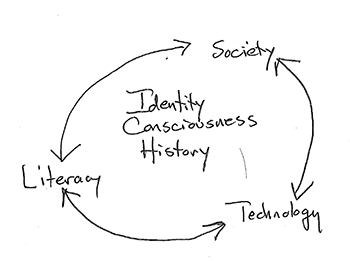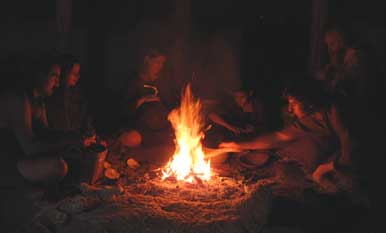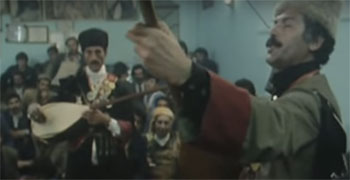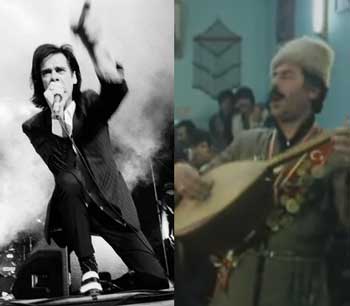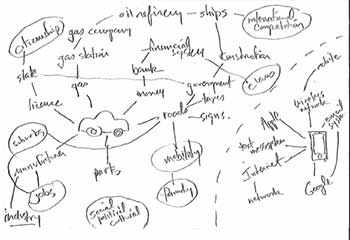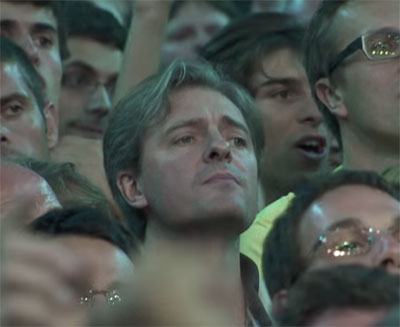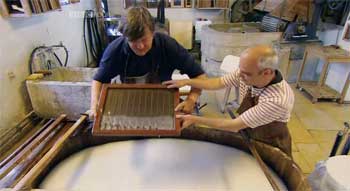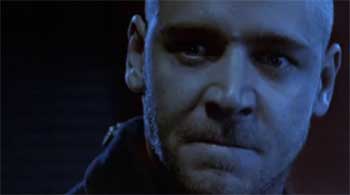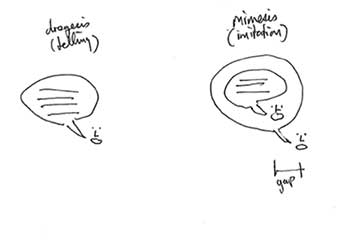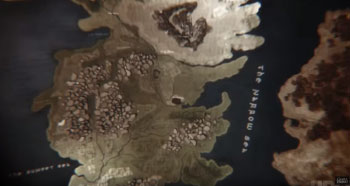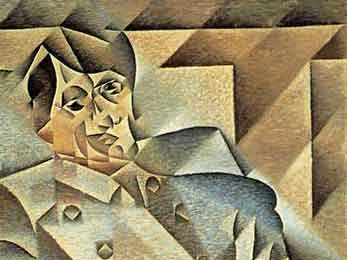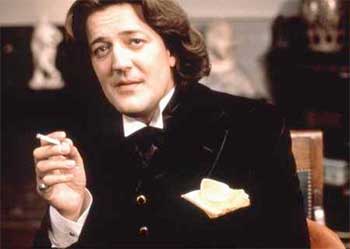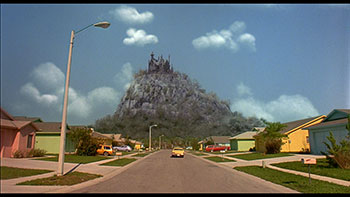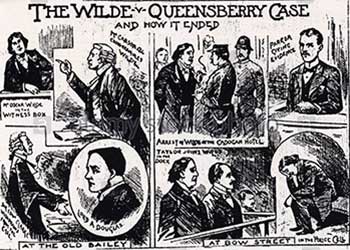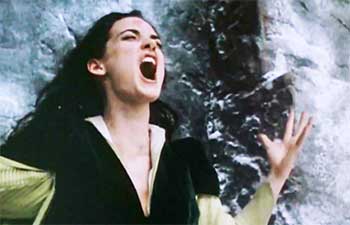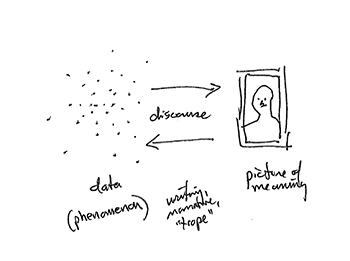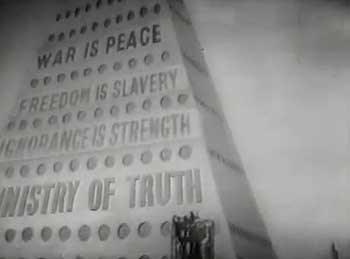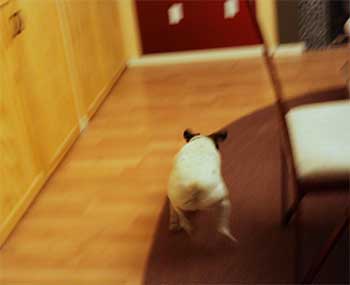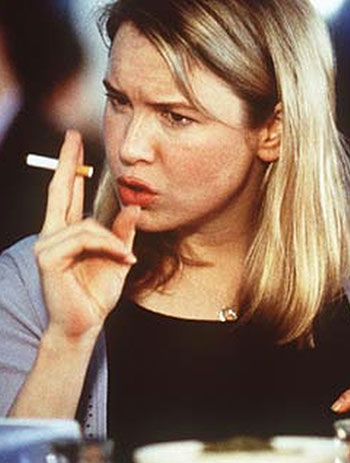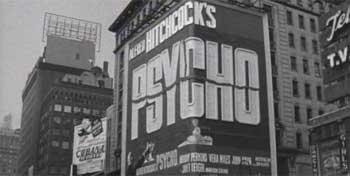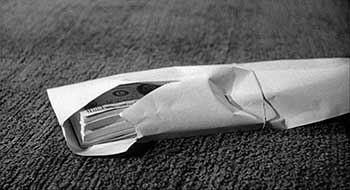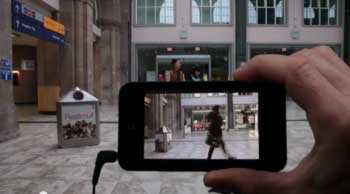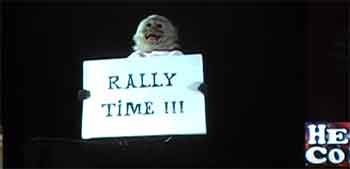Schedule | Spring 2016
January | February | March | April | May
Today and Next Meeting
| FINALS WEEK W 5/4 |
Online Final Exam
|
Semester Calendar:
January
| WEEK 1 W 1/13 |
HomeworkObtain the BooksSee the syllabus |
Day 1. Introduction to Literacy, Technology, and SocietySyllabus and Course
Literacy, Technology, SocietyTimeline and Phases of Society/Identity Terms to Remember
Resources
|
| F 1/15 | HomeworkRead and Be Prepared to AnswerRead Walter Ong, Chapter 1 using the principles of Active Reading, and come in prepared to answer the Reading Questions. Don't answer the questions on the handout in sentences and paragraphs, however. Instead, answer them in the margins of the book with word tags, arrows, stars--whatever symbols seems useful. Photocopy and Bring inAfter you've read and marked your text, choose a two-page spread from the book that best shows your active reading and engagement with Ong and one of more of the questions above. Photocopy (a.k.a., scan and print) that two-page spread, write your name in the upper right on the paper, and bring it to class next time to turn in. Read and Bring BackThe handout from Class "Jay David Bolter: The Cathedral and the Book"
|
Day 2Ong C1: The Orality of Language
|
| WEEK 2 M 1/18 |
|
No Class Meeting: MLK Holiday |
| W 1/20 | HomeworkRead and Be Prepared to AnswerRead Walter Ong,
using the principles of Active Reading, and come in prepared to answer the Reading Questions. Don't answer the questions on the handout in sentences and paragraphs, however. Instead, answer them in the margins of the book with word tags, arrows, stars--whatever symbols seems useful.
|
Day 3Ong C2: Discovery of the Primary OralReview from Last Time
The Term "Society" as opposed to "Culture""Society" (example: 15th Century Europe - time of Gutenberg) 1. "body of institutions and relationships2. "common life" as in "life we share in common" 3. companionship or fellowship "Culture" Shared ways of thinking, feeling, and acting Homework Questions4. What is “The Homeric Question” and why is it significant in understanding the differences between oral and written (that is, chirographic) culture? 5. What was Milman Parry’s discovery concerning Homer’s Illiad and the Odyssey? 6. How does the oral tradition define “great poetry” differently from the ways written cultures do?
Terms to Remember
Resources
|
| F 1/22 | HomeworkRead and MarkRead Ong's Chapter 3, "Psychodynamics of Orality" and come in prepared to answer the Reading Questions for Chapter 3 Answer The Reading Questions in Writing (Bring on Paper)Answer each of these questions in writing: a paragraph, a list, a chart, or map, etc. Make your answer "thing-like" (Ong 11), and be sure the "thing" specifically refers to particular pages and passages in Ong's Chapter 3. |
Day 4Ong C3 Psychodynamics of OralityGoals for Today
Kinds of Things to Know How to Do for the ExamsI will give you a copy of the handout, "Kinds of Things to Know How to Do for the Exams." Psychodynamics of Orality A 38-Year-Old Wheat Farmer
Terms to Remember
Resources
|
| WEEK 3 M 1/25 |
HomeworkRead and MarkRead "Ong Chapter 4 "Writing Restuctures Consciousness." Mark and, using the techniques of Active Reading, make marginal notes, especially with the question below in mind. Write, Print, and BringWrite a 500-word "Preparation Sheet" titled "Ong Chapter 4" which answers the following question:
This preparation sheet shpould
BringBring your Ong book and be sure you have the handouts "The Cathedral and the Book" and "from Plato's Phaedrus" Write a Nine-Word Nonsense SentenceTo complete what we started in class last time, write a memorable, nonsense sentence to help you recall the first letters of Ong's nine psychodynamics of orality. The first letters of the words in your sentence should be the first letters of the psycho dynamics (Ong 37-57): AARCLAEHS. I've condensed the psychodynamics into these nine single words:
An example of a nonsense sentence (which for some reason is memorable to me, though probably not to you): "After All, Royal Crowns Lift As Every Heart Stops" |
Day 5Ong C4Writing Restructures ConsciousnessReview from Last Time
Sight Isolates, Sound Incorporates
See Ong page 71.4-6, 72.6-9 Look at Homework for Next TimeDiscussion of Chapter 4Extreme change of gears: "The Sense of True Writing" (Script)
Plato
Terms to Remember
|
| W 1/27 | HomeworkPost to Moodle SiteIn the Moodle forum, "Writing Restructures Consciousness," create an "intellectual postcard" about a key idea from the first four chapters of Ong's Orality and Literacy. Use a quote from Ong somewhere in your writing. Feel free to repurpose some analysis from your Preparation Sheet on Chapter 4. You should try to insert a visible image into your posting, rather than just inserting a link. To insert an image in Moodle,
If you insert the URL of a video (YouTube, for example), Moodle will usually embed the video in a player, which will allow us to watch it without having to leave the Moodle page. Bring Your Ong Book
|
Day 6. The Machine that Made Us (Gutenberg's Press)
|
| F 1/29 | HomeworkFinish Viewing the VideoOpen the online version of the video "The Machine That Made Us" and finish watching it from where we left off. Post #1 to Moodle (Gutenberg's Machine) by Today at 9 a.m.In a reply to the Moodle forum "Gutenberg's Machine," answer one of the Viewing Guide questions with the following: 1. Take a screen shot of a moment from the video. On a Mac,
If you have a Windows machine and don't know how save a screen shot as an image file, please go to one of the Mac Labs on campus to follow the directions above. 2. Post the screen shot file to your Moodle post: In the "Your Reply" screen of Moodle (after you click "Reply" to my message at the of the forum), find the "Attachment" section with an window labeled "Drop Files Here to Upload." Drag your screen-shot image file from your desktop into this box. 3. In that same Moodle post, write a substantive paragraph that describes what is being said and done in your chosen moment of the video. Explain:
Moodle Post #2 (After 9 a.m. Friday, and Before the End of Saturday)Reply to one of your classmates' posts in the Moodle forum "Gutenberg's Machine." Be sure to click the "Reply" link at the bottom of the particular message so your reply will be nested under the correct message. In your reply, try making connections between the example and ideas in your original post with your classmate's. See if you can further develop a topic or idea concerning the processes by which literacy, technology, and society interact with one another, and with issues of identity, consciousness, and history. If useful, feel free to include an image in your reply using the technique above. |
No Class Meeting
|
February
| M 2/1 | HomeworkReadPaul Cobley, Narrative, Chapter 1 "In the Beginning, The End" Reading Question: Cobley argues that the power of narratives comes not simply from their content, but from the form of narrative. This power, Cobley says, is fundamental to the human experience and consciousness, which makes "narrative" much more than just another way of organizing a piece of writing. Choose three specific, key quotations from Cobley's chapter which suggest the source, nature, and/OR consequences of this primal, narrative power. Come to class prepared to read and explain your choices. |
Day 7
|
| W 2/3 | HomeworkRead Cobley Chapter 3Read Cobley, Chapter 3 "The Rise and Rise of the Novel." Reading Question:Cobley argues that how you choose to tell a story creates a "problem of representation" and a potential crisis of social authority. Identify three passages (with page numbers) from the chapter that suggest why the telling of a story has such an effect on the story's meaning and consequence. Post In Moodle (Before 11 a.m.)Choose one of those passages and, in a reply to the Moodle forum, "Cobley C3,"
|
Day 8The Problems of RepresentationCobley C3: "The Rise of the Novel" |
| F 2/5 | Read Cobley Chapter 4Read Cobley, Chapter 4, "Realism" Reading Questions1. Make a ListAccording to Cobley, what are some characteristics of "realist" representation? What ideas, attitudes, philosophies, or goals do works of realism share? Make a list of at least four characteristics with page numbers. 2. Three Quotations that Challenge the Realist SolutionConventionally, "realistic" representation is assumed to be objective, scientific, and apolitical. This idea presumes to solve the problems of representation. Throughout this chapter, however, Cobley argues otherwise: that realism represents another style of representation, rather than offering unmediated access to reality. Identify at least three of Cobley's reasons, ideas, examples, or arguments (with page numbers) that show how realist narrative is not pure or uncontroversial in its representation of reality or truth. Post In MoodleChoose one of those passages and, in a reply to the Moodle forum, "Cobley C4,"
|
Day 9Cobley C4: RealismListIdeas, Attitudes, Philosophies, Goals Shared by Works of Realism Terms to Remember
Send Me Your Page NumbersRemember I'm trying to keep track of the page numbers we read together in class each day so we can have a list when it comes time for the exams. When you call our attention to a quotation or term in class, please remember to send me a brief email after class with the page number(s)--including tenths to indicate how far down the page, such as 54.5 or 83.8-9--and a couple of key words to identify the quotation(s). Also, this will better enable me to give you credit for participation! Resources: |
| WEEK 5 M 2/8 |
HomeworkReadRead Cobley Chapter 5, "Beyond Realism" Reading Question (3 Passages):In Chapter 4, Cobley argued--citing Terry Eagleton--the 19th and 20th centuries saw a transformation in the scale of economic life (i.e., "capitalism") through three phases (88). These phases had profound effects on both the form and focus of narratives, and on contemporary models of individualism or identity. In Chapter 5, Cobley is describing the last phase of economic development: the global or "imperialist" stage. Identity at least three passages or examples from Chapter 5 that demonstrate the characteristics of this third phase, and how those characteristics resulted in "modernist" narrative style and a "modernist" identity. In a reply to the Moodle forum "Cobley C5" (by 11 a.m.), give the page number, a brief quotation, and two or three sentences of explanation for each of your choices. Bring your reponses (or at least notes about them) to class on paper.
|
Day 10Cobley C5: Beyond Realism (Modernism)
|
| W 2/10 | Homework1. ReadRead the following from The Picture of Dorian Gray:
2. Answer a Reading Question in MoodleArt (Representation) and LifeThe Picture of Dorian Gray is a book about the relationship of art and life--or, more generally, of representation and life. (Remember, "representation" includes writing, visual art, music, performance, or any other way of "externalizing" and preserving experience.) Wilde's novel is an example of a narrative/literary style of the 1890s called "Aestheticism," which was partly a reaction against Realism and the conventionalized "common sense" that accepted forms of realism expressed. Post to Moodle (by 11 a.m.)In a message to the Moodle forum "Wilde Dualisms," identify 2 quotations with page numbers which demonstrate the novel's ongoing preoccupation the relationship of art and life and its opposition to common-sense realism, which appears in dualisms like the following:
Write a paragraph under these quotations explaining how the two quotations, together, might suggest a philosophy or position concerning the relationship of representation and life. In what ways might representation be the foundation of a life founded on "aestheticism"? Bring your reponses (or at least notes about them) to class on paper. |
Day 11Picture of Dorian Gray 1: Plot, Narrative (Levels), Representation
Send Me Your Page NumbersRemember I'm trying to keep track of the page numbers we read together in class each day so we can have a list when it comes time for the exams. Contemporary Criticisms of Doran GrayCommanded much attention and awakened very contradictory opinions: Narrative Levels (Cobley 125 - )Note that Cobley cites Shlomith Rimmon-Kenan 1983:
Passages to Remember
|
| F 2/12 | HomeworkFinish Reading Dorian GrayBe Ready to Discuss the "Problems of Representation" Posed By This NovelContemporary criticisms of Picture of Dorian Gray charged:
Wilde responded to these criticisms in his "Preface" to The Picture of Dorian Gray. Is the book immoral? Are the characters shallow? Is Wilde using the book only as a vehicle for his wit and personal style? How does Wilde answer these accusations in specific lines of his rather cryptic Preface? Read to Understand "Aestheticism" BetterRead the brief excerpts from Walter Pater's The Renaissance. These are two classic statements of aestheticism (in short, the assertion of art's and literature's independence from the need to teach, inspire, or otherwise be socially useful). Mark on the handout lines and ideas that appear to agree with--or at least speak to--Wilde's apparent vision of art, writing, and representation and its relationship to life and society. |
Day 12:Picture of Dorian Gray 2Pater, AestheticismThe Decadent MovementGothic Genre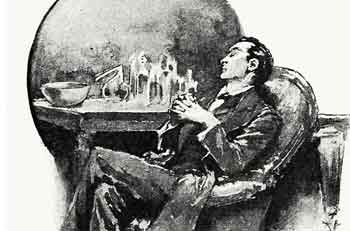 Detail from a Strand Magazine illustration of Sherlock Holmes Detail from a Strand Magazine illustration of Sherlock Holmes
Aestheticism: Pater and WildeDecadence (1890s)Gothic GenreI will give youi a copy of the handout "Notes on the Gothic Genre."
Resources
Passages to Remember
|
| WEEK 6 M 2/15 |
HomeworkRead DraculaRead pages 29-122 Find Quotations, Page Numbers, and Be Prepared to Discuss:1. East and WestDuring Jonathan Harker's journey to, and stay with, Dracula at his castle, Stoker suggests contrasts of East and West (Transylvania and Britain). Write down the page numbers of two specific phrases, passages, or descriptions where Stoker characterizes (or even just implies a characterization of) differences between East and West. ...What role do literacy and technology play in shaping those respective societies? ...In what ways do Dracula and Jonathan exemplify their respective societies? 2. Past and PresentNote down the location of three passages (with page numbers) that contrast past and present in the novel Dracula. What ideas does Stoker associate with the past or the present? with their differences? |
Day 13: Dracula 1“persistently, an anxious book”
|
| W 2/17 | HomeworkMake Notes on the HandoutSince we didn't have time to talk about the handout "Notes on the Gothic Genre" last meeting, please take a few minutes to read the handout carefully. Mark anything you don't understand. In the left margin, make notes about the following: What aspects of The Picture of Dorian Gray exemplify any of these characteristics of the Gothic? Bring your handout to class, ready to discuss your observations. ReadRead Dracula pages 123 - 215 (Chapters 8- 13) Make Notes in the MarginsAs you read, make notes in your margins concerning the following three topics: Gender and SexualityIn what ways does the novel define, affirm, transform, or transgress roles of gender and standards of sexuality? Use the norms suggested by the text itself to determine what is transformational or transgressive. Information Technologies and KnowledgeNotice that the narrative of Dracula is composed of documents, rather than the voice of a single narrator. This way of telling the story highlights the role of information technologies: letters, journals written in short hand, phonographs, typewriting, etc. How is the handling of information and knowledge critical to the batte again Dracula. In what ways is this the story of a “knowledge team.” The Gothic GenreIn what ways does Dracula use conventions of the Gothic genre as a vehicle for social anxieties of the time (gender, politics, imperialism, science, medicine, Put on Paper and BringUnder the heading for each these three topics, write a page number (with tenths) for a relevant, revealing and interesting passage. For one of the topics of your choice, add two more passages for a total of three. Under each page number, write down some key words from the passage and then some talking points for yourself to explain the relevance and significance of your choices of passage. Be prepared to turn these notes in at the end of class today.
|
Day 14Social Anxieties and Order in Dracula:Gender, The Gothic, and Technology
|
| F 2/19 | HomeworkReadRead Dracula pages 215 - 299 (Chapters 14 - 19) Social Anxieties and Social OrderAs you read, continue to track our three topics from the last homework:
On paper--or in a way you can print for class--make note of page numbers for each topic, and then write a few talking points at the bottom of the page about how social anxieties/social order are represented in these quotations as a group. Bring your notes on paper to class and be prepared to turn them in. Don't worry if your notes are not in a form or style that anyone else will understand. Your Page Numbers from Last ClassAs explained in class last time, we will now be using Moodle to collect the page numbers and other informaiton on the passages you offered (orally) in the last class meeting. Before today, please post your contributions to the last class to the appropriate forum. |
Day 15Dracula 3: Gender and SexualityConnetions Between Wilde and Stoker
|
| WEEK 7 M 2/22 |
HomeworkReadRead Dracula pages 300 - 419 (Chapters 20 - 27) Post to Moodle and Print for ClassPost the following to the Moodle Forum, "Literacy, Technology, or Society," by 11 a.m. today. Choose a passage from Dracula and use it to analyze how Stoker's presents literacy, technology, or society as a theme in Dracula. 1. Start by choosing a character or plot event in the novel, which seems to feature literacy, technology, or society as a theme. 2. Look closely at Stoker's language in some passages from the novel which represent what happens to that character, what the character does, or how the plot event unfolds. 3. In a substantial paragraph in which you quote from Dracula to describe what you see Stoker saying about the
Be sure to quote from the novel at least twice in your paragraph, and to do a "close reading" of the language of those quotations in your own analysis. Print out your Moodle posting to refer to in class and to turn in at the end. Quotations You Offered Last ClassBefore class today, please post to Moodle the pages numbers and key words of any quotations you offered (out loud) in the last class meeting. |
Day 16Dracula 4Connetions Between Wilde and Stoker
Resources
|
| W 2/24 | HomeworkMarxPrint, number the paragraphs, and read Karl Marx's "Preface" to A Contribution to the Critique of Political Economy (starting with the fourth paragraph, which begins "Although I studied jurisprudence,....") As you read the Marx piece, select and arrange six or seven key quotations from the reading (each represented by a "quotation tag" composed of the paragraph number and a few keys words) on the Base and Superstructure diagram. With your placement of these quotation tags on the diagram, you're indicating which quotations show Marx talking about:
For example, you would place a quotation about the "means of production" in the base, or a quotation about education in the superstructure. (You might need write your paragraph numbers and key words arround the edges and use arrows to show where they go in the diagram) Bring your handout to class prepared to turn it in at the end of the meeting. KantPrint, number the paragraphs, and read Immanuel Kant's "What is Enlightenment?" Print the Preparation Sheet and, under each question, note down two paragraph tags (that is, a paragraph number and a few key words each) for passages from the reading that suggest answers to each question. Bring your completed Preparation Sheet to class. Quotations You Offered Last ClassBefore class today, please post to Moodle the pages numbers and key words of any quotations you offered (out loud) in the last class meeting. |
Day 17Marx (Historical Materialism); Kant (Idealism)
Resources
|
| F 2/26 | HomeworkRead Hayden White1. From Moodle, download, print, read, mark and bring to class
See the Moodle site for links to these PDFs. Write1. Re-ReadIn Ong’s Orality and Literacy, re-read the story about pre-literate Ghana and the "structural amnesia" of that oral culture's sense of history (48.2-.7). 2. ConsiderAs literates, we might think this sense of history is almost laughable. We might be tempted to congratulate ourselves on the rigorousness and objectivity of our written histories. That is, we can record the truth of what happens, and so we have unmediated and accurate access to what happened in the past. We don’t just have an oral tradition, we might declare, We have documented history. The study of history is a social science. 3. Thought QuestionsHow does Hayden White’s argument here call into question our modern, self-assured notion that we have perfect access to the story of the past? How do the implications of what he says complicate the idea that the writing of history is scientific? 4. Write a Paragraph Using Two QuotationsWrite a substantial paragraph speaking to the questions above. Use two quotations from White. Be sure your sentences keep the focus on what White argues and how he argues it--rather than on just what you think--and be sure to introduce and integrate the quotations into your own words. Use MLA format to cite and document White. Print out and bring your paragraph to turn in at the end of class. |
Day 18Kant: RomanticismHayden White: Historiography
Resources
|
| WEEK 8 M 2/28 |
HomeworkWrite 5 Questions for the ExamWrite an exam question for each of capacities covered on the exam. You can use any of the three question formats for any of the capacities. See the handout "Capacities Expected for the Exams" for details. The capacities are:
The Format of the QuestionsWrite each of those questions in your choice of three formats:
See the handout "Format for the Exam" for details. By 10 a.m. today, post your questions to the appropriate forums in Moodle. Bring to ClassBring to class all books, handouts, and notes from the first half of the class. |
Day 19Preparation for the Midterm ExamWrite the Take-Home Portion for Wednesday's HomeworkNote that you will write and submit the Take-Home Portion via Moodle between 5 p.m. today and noon Wednesday. Resources
|
WEEK 8 |
Homework: Take-Home Portion of the MidtermTake-Home Portion of the Midterm
|
Day 20Midterm Exam: In-Class Portion |
| F 3/4 | HomeworkReview from PreviouslyHayden White:
ReadRead Cobley C6: "Modernism and Cinema" pages 132 - 154. Before you do, though, be sure to see the directions below: Cluster for Answers and PatternsAs you read the Cobley chapter, look for at least 8 passages or phrases that help you answer the questions below. Compose "quotation tags" (1-5 words and a page number with tenths) for those passages on a sheet of paper in the form of a cluster. Read carefully my directions for clustering. Be sure to follow each step, especially the final one. Choose quotations that speak to the questions below, but also use the clustering technique to look for patterns and relationships that you might not otherwise notice or think about. Questions to Be Thinking About Making Your Cluster1. According to Cobley, what are the features of modernist narrative (for instance, how does it differ from realist or Romantic narrative)? 2. What are the features of a modernist self or identity, according to Cobley? 3. In what ways does Cobley say that cinematic narrative differs from print narrative? What are some of cinematic narrative's features and techniques? 4. According to Cobley, what are some ways that cinema naturally expresses modernist ideas and attitudes? |
Day 21Cobley C6: Modernism and Cinema;Hayden White
|
| M 3/7 | Spring Break |
|
| W 3/9 | Spring Break |
|
| F 3/11 | Spring Break |
|
| WEEK 9 M 3/14 |
HomeworkReadRead 1984, pages 1-81 Write a Paragraph Using 3 Quotations What are some ways that the government controls society in 1984? Identify three quotations that help describe these methods and their effects. Write a long paragraph that uses the three quotations to answer the questions. Print the paragraph and bring it to class. Quotations You Offered Last ClassBefore class today, please post to Moodle the pages numbers and key words of any quotations you offered (out loud) in the last class meeting.
|
Day 22Orwell's 1984 1: Control |
| W 3/16 | HomeworkReadRead 1984, pages 81 - 156 Five Quotation Tags on a HandoutAs you read this section of 1984, have your Modernism handout at your side. Print it out if you don't have it on paper. 1. Look over the quotations, characteristics, causes, and conditions our Modernism handout. (Print this out if you don't have one on paper) 2. Consider these two questions:
3. As you read, note down the location of at least five quotations from 1984 which suggest answers to these questions. 4. In the margin of the handout, write quotation tags (a few key words and the page number with tenths) for each passage from 1984, and then draw a line to connect the tag with the point about modernism. Write and Print a ParagraphThink about the connections you've made on the handout. Write and print out a paragraph that analyzes these connections between modernism and 1984, showing how Orwell's novel:
Quotations You Offered Last ClassBefore class today, please post to Moodle the pages numbers and key words of any quotations you offered (out loud) in the last class meeting. |
Day 23Orwell's 1984 2: Modernism
Resources
|
| F 3/18 | HomeworkReadRead 1984, pages 156 - 218 What Went Wrong With History?In the dystopian world of 1984, it is more than just one society that has gone wrong. The very process of history itself has been halted. Progress is impossible because change is not possible. History has stopped. Choose a passage from 1984 that seems to demonstrate or comment on this freezing of the historical process. Look back to some of our previous readings and discussions that concerned the process of history:
Cluster to AnswerOn a piece of paper, start a cluster with a quotation tag for your chosen passage at the center. (See my explanation of clustering as an analytical technique.) With your cluster, try relating key ideas, terms, quotations from the theorists above to your passage from 1984. Add quotation tags for more passages from 1984 as they occur to you. Bring the cluster to class. Quotations You Offered Last ClassBefore class today, please post to Moodle the pages numbers and key words of any quotations you offered (out loud) in the last class meeting.
|
Day 24Orwell's 1984 3:
|
| WEEK 10 M 3/21 |
HomeworkReadRead 1984, pages 218 - 298 Love in 1984The conflict between the individual self and the social order is a characteristically modernist theme. One way an author like Orwell can present an individual self like Winston or Julia is through the idea of love. Orwell represents many kinds of love in 1984: brotherly, motherly, fatherly, romantic, sexual, marital, patriotic.... Can you find others? Find at least 5 examples or passages where Orwell represents or talks about love, in one form or another, in 1984. Note down the page numbers with tenths and a few key words from the quotation (a quotation tag). Write a ParagraphWrite a paragraph in which you quote and analyze at least two of the passages you found to
Quotations You Offered Last ClassBefore class today, please post to Moodle the pages numbers and key words of any quotations you offered (out loud) in the last class meeting. |
Day 25Orwell's 1984 4:
|
| W 3/23 | HomeworkReadCobley, Chapter 7 "Postmodernism" Copy, Write, Print, Bring inAnswer each of the following questions in a paragraph. Quote from the Cobley book at least once in each. 1. In what ways does the postmodern condition result from the saturation of everyday life by media (the "mediation" of life)? 2. In what ways does the postmodern condition result from changes in the material or economic nature of this era's society (a.k.a., Marx's "base")? 3. How do postmodernist attitudes and ideas about the past (or history) differ from either the modernist rejection of the past, or the older veneration of tradition? What are these attitudes and ideas? 4. How do the "grand narratives" or "metanarratives" that Cobley (via Lyotard) talks about differ from ordinary stories or narratives? In other words, what makes them "grand" or "meta"? Quotations You Offered Last ClassBefore class today, please post to Moodle the pages numbers and key words of any quotations you offered (out loud) in the last class meeting.
|
DAY 26. Postmodernism"Real Dogs Have Fun, Mostly Inside"
Resources
|
| F 3/25 | HomeworkRead Bridget Jones' DiaryPages 1 -74 Postmodern Satire1984 and Bridget Jones' DiaryStrangely enough, both 1984 and Bridget Jones' Diary are satires. They were both also chosen by readers of the prestigeous British newspaper The Guardian as two of the 10 Books That Defined the Twenieth Century. If 1984 is modernist in both the world it represents and the ways it represents it, could we say that Bridget Jones' Diary is postmodern in subject and style? Notes on Your HandoutMake notes in the margins of your Postmodernism handout (or print out a new one if you need more room), connecting particular lines or details from BJD to specific items on the handout. Also try stepping back: are there general aspects of the book that you can associate with postmodernism? For instance, the diary format, the voice, the language, ongoing themes, plot lines, etc. On your handout, connect these general observations to particular ideas about postmodernism, and try to find a particular instance that you can point to on a particular page. Quotations You Offered Last ClassBefore class today, please post to Moodle the pages numbers and key words of any quotations you offered (out loud) in the last class meeting. |
Day 27 Bridget Jones' Diary I: Postmodernism, Character, and Humor
|
| WEEK 11 M 3/28 |
HomeworkRead Bridget Jones' DiaryPages 75-195 Thought Questions: Media and Information TechnologiesIn the novel Dracula, information technologies--including writing, transcription, duplication, electronic media, etc.--were the salvation of modernity when it was threatened by dark forces of the past. In 1984, information technologies (television, radio, newspapers, books) were modern tools of oppression and the obsolence of consciousness itself. How does Fielding represent* information technologies and literacies in Bridget Jones' Diary?
Three Passages, One New UnderstandingCome in with page numbers for passages that answer at least three of the questions above. Be sure to label what passage answer which questions. Be Ready to WriteBe ready to write a paragraph in class about how your three chosen quotations, together, create an understanding of Fielding's use of* media in Bridget Jones' Diary than any one of the psaages alone does not offer. Quotations You Offered Last ClassBefore class today, please post to Moodle the pages numbers and key words of any quotations you offered (out loud) in the last class meeting. * Notice my irritating use of bold face above. With this, I'm asking you to re-approach the book (after reading it) as something Fielding is showing and telling us, rather than as an account of something that's supposedly real. In other words, I'm asking you to analyze the book as a narrative, rather than just a story or plot. (Remember Cobley's distinctions of story, plot, narrative [5].) |
Day 28 Bridget Jones' Diary II:Media and Information Technologies
Resources
|
| W 3/30 | HomeworkRead Bridget Jones' DiaryPages 196 - 271 Memorize the 5 Characteristics of PosmodernismTry using the mnemonic nonsense phrase "Real Dogs Have Fun, Mostly Inside" (RDHFMI). See the Postmodernism handout. 1984 and Bridget Jones' Diary1. The Set-UpReaders of the prestigeous British newspaper The Guardian chose 1984 and Bridget Jones' Diary as two of the 10 Books That Defined the Twenieth Century. The two novels, however, come from very different ends of the century: Orwell's from the 1940s and Fielding's from the '90s. Comparing and contrasting the two novels distinguishes two very different modes of "society" (one of our course's key words): modes we might call
2. A Three-Column ComparisonOpen the Word file "Three-Column Comparison." In the middle column, fill in vertically at least eight terms that could be used to compare 1984 and Bridget Jones Diary. Here, for instance, are 17 you might choose from:
In the left column labeled, "1984," write a few words that characterize Orwell's representation of that theme or type in 1984. You might list an example or two from the novel as well. In the right column labeled, "Bridget Jones' Diary," do the same: type in examples and characterizations of how that theme or type is represented by Fielding. 3. Rank Your Top 3 and Have Page NumbersWhich points of comparison best illustrate the differences between modernist and postmodernist modes of society? of consciousness? Rank your top three and be ready to discuss why. What passages from Bridget Jones Diary best illustrate the postmodern, '90s side of your top three differences? Have page numbers for each of the three Quotations You Offered Last ClassBefore class today, please post to Moodle the pages numbers and key words of any quotations you offered (out loud) in the last class meeting. |
Day 29 Bridget Jones' Diary 3:Resources
|
| F 4/1 | HomeworkPrint, Read, and Make Notes OnPrint, read, and annotate Chapters 2 and 3 of Scott McCloud's Understanding Comics" available from the Moodle site. CommentMcCloud's Chapter 2 provides an introduction to "visual styles." McCloud's point is that the choice of style is not a matter of mere decoration, but fundamental to how an images means. The climax of the chapter is McCloud's monumental, two-page diagram on pages 52-53, which probably won't make much sense until you've actually read the chapter before and after the diagram. Two Explanatory Panels (Chapter 2)First, choose two panels from the chapter that could help us understand all that's going on in that key diagram on pages 52-53. Come to class prepared to point to those panels and relate them to some aspect of the big diagram to help explain it. Refer to your panels by page, row, and panel numbers: for instance, page 12, row 2, panel 2. Memorize the Six Transition Types (Chapter 3)1. Memorize McCloud's 6 Types of panel-to-panel transitions. (You might come up with a mnemonic nonsense phrase if it helps to recall the first letters of tbe transition types.) Write a ParagraphBut so what? In what ways does the rest of McCloud's Chapter 3 make clear why these transitions are profoundly significant in understanding how visual "sequential art" forms like comics work on readers and viewers? Choose two or three terms, examples, or panels from Chapter 3 which answer the question above, and use them in a paragraph of explanation. Be sure to cite McCloud using just the page number. |
Day 30: Intertextuality
|
| WEEK 12 M 4/4 |
|
Class Cancelled |
| W 4/6 | HomeworkPrint, Read, and Make NotesPrint, read, and annotate Chapters 4 and 6 of Scott McCloud's Understanding Comics" available from the Moodle site. Moodle Forum Posting (C4)In a reply to the Moodle forum "McCloud's C4: Time Frames," use ideas and examples from McCloud's Chapter 4 to analyze how an image that you've found frames time. The image might be a panel of a drawn comic, a photograph, a still shot from a film, a piece of art, etc. 1. Download or scan a copy of your chosen image so you have it as a digital file. 2. In a reply to the opening message of the Moodle forum, type a title for your message. 3. insert the digital file of your image into your Moodle post: Scroll down in the "Your Reply" screen of Moodle (after you click "Reply" to my message at the of the forum), and find the "Attachment" section with an window labeled "Drop Files Here to Upload." Drag your screen-shot image file from where it is saved and into this box. 4. From the PDF of McCloud's Chapter 4, take a screen shot of a panel (or perhaps a set of panels) which suggest language and ideas for analyzing the framing of time in your chosen image (Step 1). 5. Write a paragraph in the Moodle post which applies the ideas and examples from McCloud to an analysis of time in your image. Thought Question:
|
Day 31: McCloud C4 and C6:Time Frames and Showing/TellingResources
|
| F 4/8 | HomeworkRead Persoplis (- page 61)Read Perspolis: the Introduction and then pages 3 - 61 Post to 2 Moodle ForumsBy 11:00 a.m. today: In the two Moodle forums for Persepolis and McCloud, I will ask you to compare an individual panel or sequence of panels from Persepolis (cite page number and row number) to an idea/technique/effect from McCloud (represented by a particular panel or set of panels identified by page/row number). Write about two such comparisons:
In each case, try to explain how the McCloudesque technique affects the meaning and feeling Satrapi achieves in the story at that moment. In other words, we want to see how McCloud's various techniques actually matter when it comes to a real narrative.
|
Day 32 Persepolis 1Resources
|
| WEEK 13 M 4/11 |
HomeworkComplete PersepolisRead Persepolis through page 153. Sample Final Exam QuestionPrepare to Write in ClassBelow you will find a good sample of a potential take-home, final exam question. Imagine that you are preparing to answer this question. What three panels would you choose to discuss? What notes would you make to yourself? What other brainstorming techniques would you use? Do all the preparation and brainstorming that you would do before answering the question, and come to class ready to write that answer. The Question1984 and Bridget Jones Diary give us two memorable main characters (Winston Smith and Bridget Jones), and also two opposing models of
This semester, we have already discussed how these differences can be characterized:
Is the character and world of Marjane and the style of the Persepolis more modernist or postmodernist? That is, is the imagined world of Persepolis and Marjane’s style of consciousness more like those of 1984 or Bridget Jones’ Diary? Looking at the handouts for the respective -isms, how do we decide? Choose three particular panels from Satrapi’s novel to illustrate your argument that the novel is modernist or postmodernist in nature. Looking at those three panels, can you also explain how Scott McCloud's critical vocabulary and graphic techniques can help us understand how your chosen -ism is expressed in visual literacy? Make references to particular pages/panels from McCloud.
|
Day 33: Persepolis 2: -IsmsResources
|
| W 4/13 | HomeworkReview of Visual Literacy
|
Day 34: Film LiteracyResources
|
| F 4/15 | HomeworkReadRead the handout: The Tragic Wit of Psycho (Donald Spoto) Choose a ThemeChoose a particular theme or effect described by Spoto to look for as you watch the film Five Pages Prepared for Taking NotesCome in with five sheets of paper divided into four columns for taking notes on the four parameters of film: Cinematography, Editing, Mise en Scene, Sound. Be prepared especially to take notes on the narrative of the film (as opposed to the story or plot), paying particular attention to how the film's technique serves a meaning and effect that Spoto talks about (and the meaning and effect of the film generally). Essentially, we want to pay attention to how technique (narrative) is deployed not for its own sake, but for larger social, cultural, political, aesthetic purposes. |
Day 35: Psycho 1
Taking Notes on FilmToday in class, I will ask you to take notes on the film using the four-column-entry format I explained as part of your homework for today:
Resources |
| WEEK 14 M 4/18 |
HomeworkPost to Moodle in "Psycho 1"
1. Start Your Paragraph with a QuotationBegin by quoting Spoto about one theme or idea that he observes in Psycho from the handout "The Tragic Wit of Psycho." Some of the themes or ideas Spoto mentions incude
2. Complete Your ParagraphThen do the following in your paragraph: A. describe a scene, shot, or sequence in the film that illustrates Hitchcock's handling of that theme or idea, B. analyze how Hitchcock employs one of more of the narrative "parameters of film" to develop this theme or idea in your chosen scene or shot (cinematography, editing, mise-en-scene, sound), B. Then, explain how that same scene or shot suggests a relationship or association between your chosen theme or idea and another one that Spoto mentions, or perhaps one that you've observed. (For example, how a particular scene relates
3. Optional Image or Screen Shot from PsychoIf you are able to find an image online from that scene (or take a screen shot from an online clip form the film) to illustrate your paragraph, feel free to insert it into your post. To insert the image file of your screen shot into your Moodle post: Scroll down in the "Your Reply" screen of Moodle (after you click "Reply" to my message at the of the forum), and find the "Attachment" section with an window labeled "Drop Files Here to Upload." Drag your screen-shot image file from your desktop into this box. Five Pages Prepared for Taking NotesCome in with five sheets of paper divided into four columns for taking notes on the four parameters of film: Cinematography, Editing, Mise en Scene, Sound. See the handout Film Notes Format: Four Formal Parameters. Be prepared especially to take notes on the narrative of the film (as opposed to the story or plot), paying particular attention to how the film's technique serves a meaning and effect that Spoto talks about (and the meaning and effect of the film generally). Essentially, we want to pay attention to how technique (narrative) is deployed not for its own sake, but for larger social, cultural, political, aesthetic purposes.
|
Day 36: Psycho 2
Taking Notes on FilmToday in class, I will ask you to take notes on the film using the four-column-entry format I explained as part of your homework for today:
|
| W 4/20 | HomeworkReply to Someone Else's Post to "Psycho 1"Respond to someone else's Moodle posting, exploring and explaining in a substantive paragraph some connection or parallel between the observations in that posting and those of your own post. In your paragraph, be sure explicitly to mention scenes and shots from our most recent day's viewing to update the discussion. In essence, we're using one scene or shot from Psycho to enable us to see how Hitchcock is using the Four Formal Parameters of Film to relate together some of the themes and ideas Spoto talks about (for example, Gothicism, mothers/sons, bathrooms).
|
Day 36: Psycho 3Resources
|
| F 4/22 | HomeworkPost a Link and a Paragraph1. Find online a video clip or screen shot from a film or television show (or other work that uses film literacy) which demonstrates a particularly effective use of one or more of the Four Formal Parameters of Film. 2. In a reply to the Moodle forum "An Example of a Film Parameter at Work," post a link to that clip or image and, in a paragraph, write about how cinematography, editing, mise-en-scene, and/or sound are used to make that scene or sequence effective or notable.
|
Day 37: Psycho 4Resources
|
| WEEK 15 M 4/25/16 |
HomeworkDownload, Print, Read, and MarkFrom the Moodle site (under "Readings"), download and print Lev Manovich's article, "The Poetics of Augmented Space." Identify Three Passages or ExamplesIn what ways are the literacies or "poetics" of augmented space realizations of postmodernist ideas and attitudes? Identify at least three passages and/or examples from Manovich that you can relate to the characteristics and causes described on the Postmodernism handout. |
Day 38: Augmented Space and Postmodernism
Resources
|
| W 4/27/16 | HomeworkPicture, Quotation, ExplanationIn the Moodle forum, "Manovich's Augmented Space: Illustrated and Explained,"
Quotations You Offered Last ClassBefore class today, please post to Moodle the pages numbers and key words of any quotations you offered (out loud) in the last class meeting. |
Day 39: Intertextuality, Augmented Space (Public Display)Resources
|
| F 4/29/16 | HomeworkExam Preparation: Two Copies of Cluster1. Do a cluster of at least ten items from our semester's readings and discussions. (See these directions on clustering.) This cluster should have as its central starting point one "stimulus word or phrase": a particular object, example, symbol, person, etc. from a single text from our class. In that cluster, then try to associatively conntect to that central starting point as many items as you can from the entire semester as you can. These conntected items can be titles, examples, abstract ideas, characters, scenes, phrases, distinctions, passages, key terms, etc. Examples of the cluster's central object, example, etc. could be
All items should include have page numbers. 2. Make a second copy of your completed cluster and bring both to class.
|
Day 40: Final Exam PreparationsResources
|
May
| FINALS WEEK W 5/4 |
Online Final Exam
|
